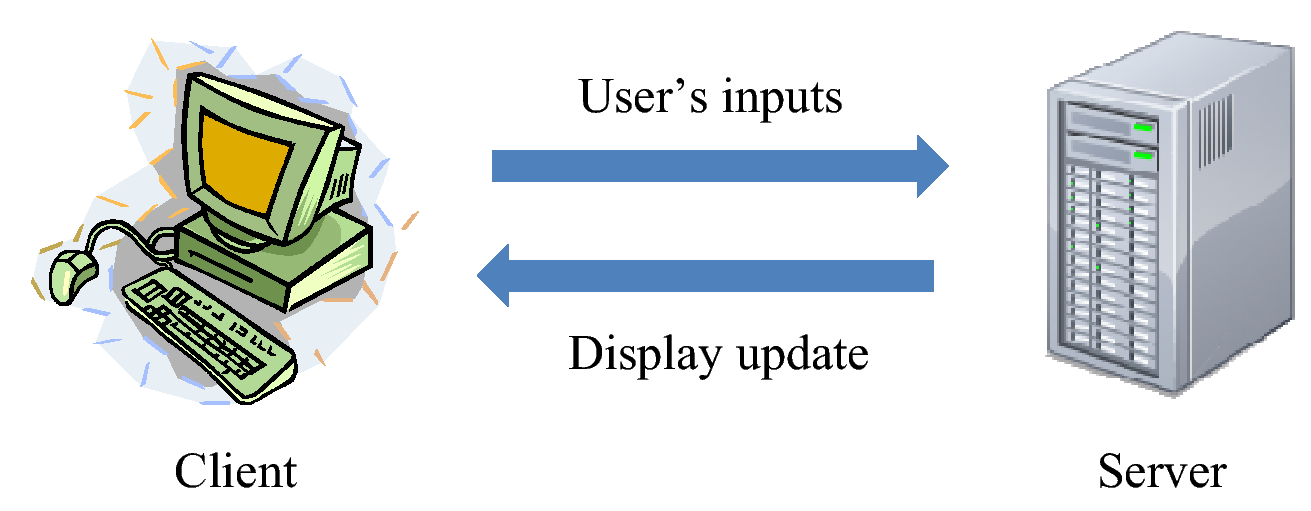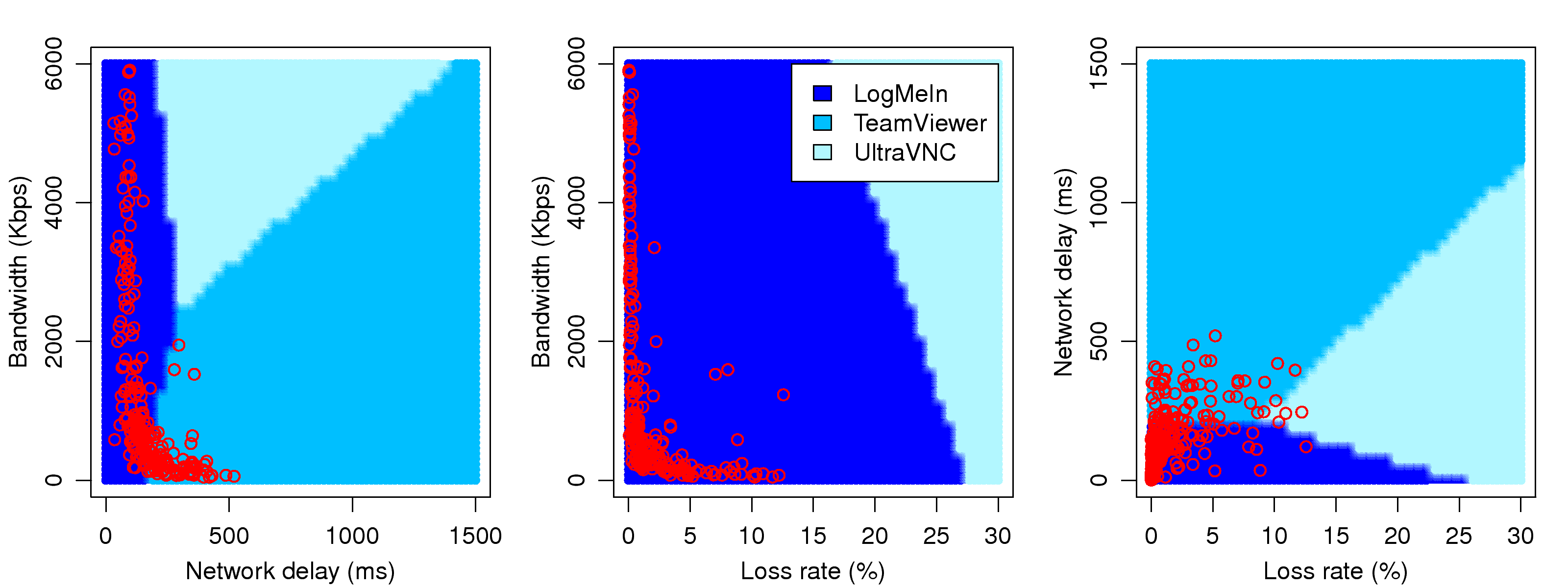[1]
"Citrix." [Online]. Available:
http://www.citrix.com/
[2]
"LogMeIn." [Online]. Available:
http://www.logmein.com/
[3]
"OnLive." [Online]. Available:
http://www.onlive.com/
[4]
"PingER,"
http://www-iepm.slac.stanford.edu/pinger/.
[5]
"StreamMyGame." [Online]. Available:
http://www.streammygame.com/
[6]
"Sun Ray." [Online]. Available:
http://www.sun.com/sunray/
[7]
"TeamViewer." [Online]. Available:
http://www.teamviewer.com/
[8]
"UltraVNC." [Online]. Available:
http://www.uvnc.com/
[9]
"Windows Remote Desktop Protocol (RDP)." [Online]. Available:
http://msdn.microsoft.com/en-us/library/aa383015.aspx
[10]
K.-T. Chen, J.-W. Jiang, P. Huang, H.-H. Chu, C.-L. Lei, and W.-C. Chen,
"
Identifying MMORPG Bots: A Traffic Analysis Approach,"
EURASIP
Journal on Advances in Signal Processing, 2009.
[11]
W. S. Cleveland, "Robust locally weighted regression and smoothing
scatterplots,"
Journal of the American Statistical Association,
vol. 74, no. 368, pp. 829-836, 1979.
[12]
D. De Winter, P. Simoens, L. Deboosere, F. De Turck, J. Moreau, B. Dhoedt, and
P. Demeester, "A hybrid thin-client protocol for multimedia streaming and
interactive gaming applications," in
Proceedings of the International
Workshop on Network and Operating Systems Support for Digital Audio and
Video, 2006.
[13]
L. Deboosere, J. De Wachter, P. Simoens, F. De Turck, B. Dhoedt, and
P. Demeester, "Thin client computing solutions in low-and high-motion
scenarios," in
International Conference on Networking and Services,
2008.
[14]
A. Jurgelionis, P. Fechteler, and P. Eisert, "Platform for distributed 3D
gaming,"
International Journal of Computer Games Technology, January
2009.
[15]
A. Lai and J. Nieh, "Limits of wide-area thin-client computing,"
ACM
SIGMETRICS Performance Evaluation Review, vol. 30, no. 1, pp. 228-239,
2002.
[16]
--, "On the performance of wide-area thin-client computing,"
ACM
Transactions on Computer Systems (TOCS), vol. 24, no. 2, pp. 175-209, 2006.
[17]
H. Matsumoto, T. Ashida, Y. Ozasa, T. Maruyama, and R. Thawonmas, "ICE
Pambush 3,"
Controller description paper,
http://cswww.essex.ac.uk/staff/sml/pacman/cig2009/ICEPambush 3/ICE Pambush
3.pdf.
[18]
J. Nieh, S. Yang, and N. Novik, "Measuring thin-client performance using
slow-motion benchmarking,"
ACM Transactions on Computer Systems
(TOCS), vol. 21, no. 1, pp. 87-115, 2003.
[19]
J. Padhye, V. Firoiu, D. Towsley, and J. Kurose, "Modeling TCP throughput:a
simple model and its empirical validation," in
Proceedings of the ACM
SIGCOMM Conference on Applications, Technologies, Architectures, and
Protocols for Computer Communication, 1998, pp. 303-314.
[20]
T. Richardson, Q. Stafford-Fraser, K. Wood, and A. Hopper, "Virtual network
computing,"
IEEE Internet Computing, vol. 2, no. 1, pp. 33-38,
2002.
[21]
P. Simoens, P. Praet, B. Vankeirsbilck, J. De Wachter, L. Deboosere,
F. De Turck, B. Dhoedt, and P. Demeester, "Design and implementation of a
hybrid remote display protocol to optimize multimedia experience on thin
client devices," in
Telecommunication Networks and Applications
Conference, 2008, pp. 391-396.
[22]
B. Vankeirsbilck, P. Simoens, J. De Wachter, L. Deboosere, F. De Turck,
B. Dhoedt, and P. Demeester, "Bandwidth optimization for mobile thin client
computing through graphical update caching," in
Telecommunication
Networks and Applications Conference, 2008, pp. 385-390.


